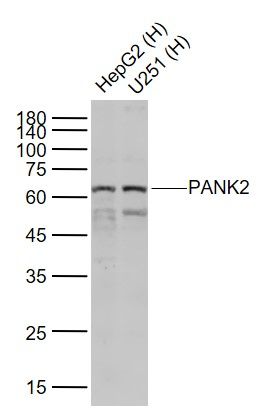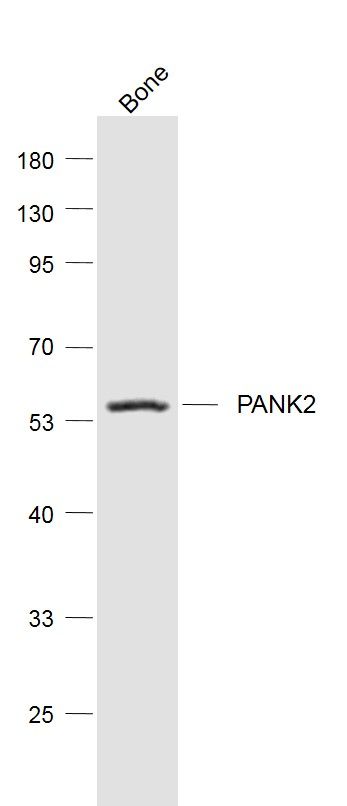Sample:
Lane 1: HepG2 (Human) Cell Lysate at 30 ug
Lane 2: U251 (Human) Cell Lysate at 30 ug
Primary: Anti-PANK2 (SL8338R) at 1/1000 dilution
Secondary: IRDye800CW Goat Anti-Rabbit IgG at 1/20000 dilution
Predicted band size: 62/50 kD
Observed band size: 62 kD

